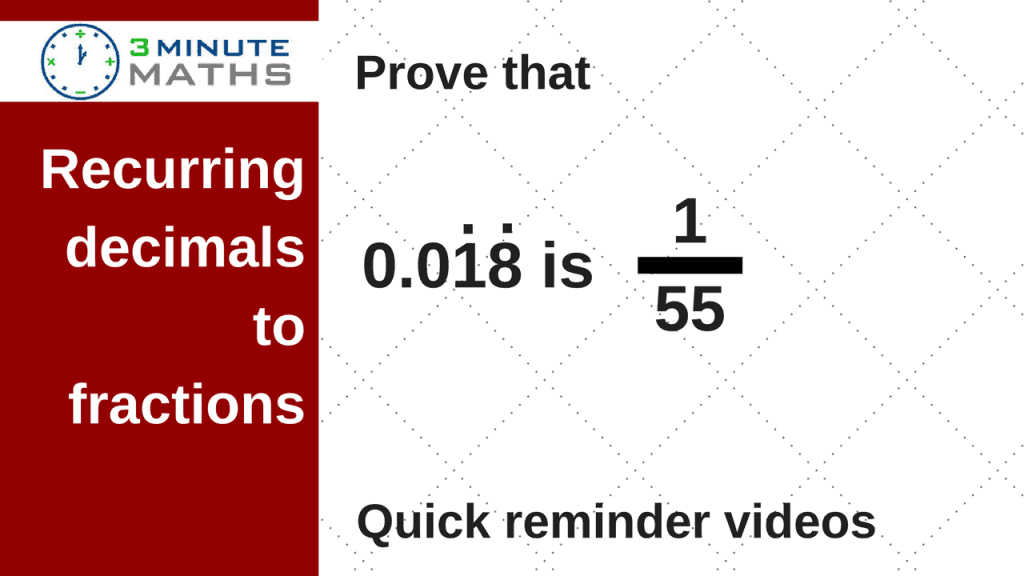Recurring decimals to fractions questions seem to appear fairly frequently on GCSE papers – especially non calculator, if there is some degree of cancelling down required.
You need to be able to follow the same sort of method each time, but be prepared for occasional arithmetic. The whole idea is to create a way of subtracting two values of ‘n’ in order to get rid of the recurring numbers.
Many students feel more comfortable with decimals although, increasingly, the national curriculum seems to be introducing fraction calculations at a much earlier stage (year 3 onwards). For some calculations, fractions are a little easier to work with, once you’ve learned the techniques.
Although students learning to convert recurring decimals to fractions can seem a little irrelevant, it is . a useful skill for some areas of higher level maths.
“Recurring” decimals can also be called “repeating” decimals and here’s a link to a previous post that might be helpful.
Top Tips!
- Most problems can be solved by multiplying by 10, 100 or (occasionally) 1000
- Always show your working
- Don’t give up! Follow the method and you should be able to gain some marks
If you’d like to ask for any more detail, or you’re not sure about anything, please do ask a question in the comments section.
All best with your studies.
Watch on YouTube
How to convert recurring decimals to fractions – GCSE maths 7+
How to convert a recurring decimal to a fraction – GCSE mathematics 7+
How to convert a recurring decimal to a large fraction – GCSE mathematics 7+
Convert a recurring decimal to a very large fraction – GCSE maths 7+

Leave a Reply